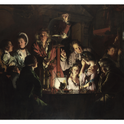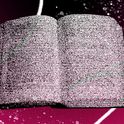Among the countless theories as to the purpose of Stonehenge, one of the more curious is that it might have been a musical instrument. Back in 2014, two academics from the Royal College of Art, Jon Wozencroft and Paul Devereux, conducted research into the “archaeoacoustic” qualities of the henge’s small circle of bluestones, finding that three of them made a ringing sound when hit with a hammer. Testing thousands of similar bluestones at the Carn Menyn ridge, in Wales, they found between five and 10 per cent likewise made a sound when struck. In some areas, it was as high as 20 per cent.
Just as Wozencroft and Devereux were bringing to light a new way of thinking about Stonehenge, they also stumbled across something else. One reason not all the bluestones at Stonehenge emit a sound is because most were bedded in concrete in the early 20th century, “preserving” their position but also irreversibly changing their acoustic properties. There was another thoroughly modern problem, one so bad that other researchers have found it simply impossible to conduct further sound experiments at the henge: the noise of traffic coming from the A303.
The British artist Ithell Colquhoun hated the noise of traffic. In her book The Living Stones, a travelogue and “psychic geography” of Cornwall, she dedicates an entire chapter to bemoaning this blight on the tranquillity of her adopted home: “It is through the sense of hearing that the age of mechanization and profit-making has made here its chief assault.” The radio, she argued, was also just as mind-numbing, as was the din of electric hedge trimmers. “If people cannot be brought to realize the torture they may inflict on their neighbours, will they not consider the harm they do to themselves?”
Colquhoun’s complaint was not simply that of a curmudgeon who wanted to be left alone. As we’ve discovered at Stonehenge, something has been lost in the march of progress that we weren’t even aware of losing. Colquhoun fervently believed that a figment of that thing still exists, if only we care enough to listen out for it:
Mrs Thornley, who is to me the embodiment of the tarot’s Queen of Cups, her kinship with elemental Water expressing itself through her pilgrimage quest of Cornwall’s holy wells, heard something very like Caliban’s ‘thousand twangling instruments’. Monica Baldwin uninhibitedly described the valley’s music as the pipes of Pan, while another friend used to hear strange voices in the air. ‘It is the atmosphere singing,’ as someone has just written to me. To my mind, these experiences of sensitive people confirm what folk tales have known for ages past, though now shut out of consciousness by a ‘closed rationalism’.
Born in India to a military family in 1906 but raised in Cheltenham, Colquhoun is nowadays considered one of most significant British artists of the 20th century, even if she was largely denied that accolade during her lifetime. Now, close to 40 years after her death at the age of 81, the Tate is staging the first major retrospective of her work, having displayed it in St Ives, in Cornwall itself, earlier in the year before bringing it to Tate Britain, in London, in time for the summer. Somewhat surprisingly, this is the first time the Tate has ever toured a show between its galleries; even if, in Colquhoun’s case, the starting point at St Ives is hardly incidental.
After graduating from the Slade in 1931—where she won student prizes for her unnerving allegorical paintings, often drawn from stories in the Bible and classical antiquity—Colquhoun quickly embedded herself within the leading surrealist circles of London and Paris, befriending the likes of Roland Penrose, André Breton and Man Ray. The collective influence these artists had on her, particularly in her adoption of “autonomous” painting techniques—such as decalcomania, in which paint is randomly applied to one sheet of paper before being pressed against another to create a mirror image, which is then consciously refined—was indelible and lifelong. Even today, she is primarily known as a surrealist artist. Yet it wasn’t until her move to Cornwall that her artistic and spiritual inclinations found their site of natural resonance.
Colquhoun made frequent visits to Cornwall throughout the 1940s, drawn to the “balsamic quality in the air that never fails to bring some healing”; by 1949 she had bought a small, dilapidated hut in Lamorna, West Penwith, to use as a studio. Over the next decade, she would split her time between there and London until she bought a more habitable cottage in the nearby village of Paul, where she moved permanently and lived out the rest of her days. While to a more urbane artist—perhaps the kind who praised its qualities as an “artists’ colony”—Cornwall’s plethora of stone circles and holy wells may have amounted to little more than exotic backdrop, for Colquhoun they were evidence of something profound. Unlike in most of the British Isles, here ancient custom remained half-conscious in the minds of the Cornish people; it was, in her words, a “living activity”, a live culture that offered shelter from the “ravages of modernity”.
Integral to that culture, and perhaps what made it so appealing to Colquhoun, was how it grounded people in their environment. Prior to her arrival in Cornwall, Colquhoun had already dedicated her work to unearthing what she believed was an indivisible, spiritual union between humankind and nature. This had often taken the form of quite literal visual analogies: tree stumps made to look like amputated bodies, say, as in The Pine Family (1940), or a rocky outcrop reminiscent of two arched thighs, as in Scylla (1938), inspired by Colquhoun’s view of herself in the bathtub. The problem was that these images existed on a plane of their own: useful thought experiments, perhaps, reminiscent of the work of René Magritte, but bearing no relation to the real world.
Unlike in most of the British Isles, ancient custom remained half-conscious in the minds of the Cornish people
That changed in Cornwall. The painting The Sunset Birth (circa 1942), for instance, may at first appear otherworldly, but in fact depicts the very real Mên-an-Tol, a set of standing stones not far from St Ives famous for its central stone with its middle holed out. In Colquhoun’s depiction, the stones are charged and as brightly coloured as gems, floating like meteorites in space. Weaving between the two outer stones and through the hole of the middle stone are what appear to be ribbons of colour. On closer investigation, we realise that these ribbons are in fact the spectral figure of a woman. For generations, squeezing yourself through Mên-an-Tol (which, in Cornish, literally means “stone with hole”) has been a well-worn tradition, a rite said to aid with childbirth and health problems. “I crawled from east to west through the ring-like stone set on edge in the centre of this monument as a cure for rheumatism and was disappointed with the result,” Colquhoun recounts in The Living Stones, only realising later where she had gone wrong: “In order to be effective the rite should be performed in a state of nudity.” (This, apparently, was a common mistake.) She would soon make many other images of Cornish megaliths, such as Dance of the Nine Opals (1942) and Landscape of Antiquities (1950), all inspired by the belief that these stones represent the nodes of supernatural magnetic currents.
The clinical, almost instructive quality of these works—as though what is being shown is a guide or map—is reflective of Colquhoun’s wider approach to spiritualism: fervent yet rigorous, open-minded while under no illusions, a scientific sensibility brought to bear on the unscientific. In another memorable anecdote from The Living Stones, Colquhoun describes a visit to a fair in Helston, at which she meets a “quack-doctor” proselytising on the healing properties of a pill made from so-called holy thistle. “One could probably achieve considerable success as a healer without other qualifications than common sense,” she remarks with a shade of scorn; she buys the pills anyway. After giving them a go, she notes their effect is “strongly purgative”—quack cures are invariably laxatives. That might sound like it would be a disappointment, to uncover the truth behind the magic, but for Colquhoun it did not undermine the overall project. For her, the ineffable should not remain ineffable for its own sake, and there was nothing spiritual that couldn’t also be systemised and explained, so long as you found the right way to explain it. Correct and repeated procedure was crucial, so that you might attain spiritual enlightenment step by step.
It was in this, however, that Colquhoun gave herself away as more a product of her time than she may have liked to admit. Scientific advancements of the late 19th century—particularly X-rays and telegraphy, and the discovery of electromagnetism—had given credence to a long-held spiritual hunch that there existed an invisible world occupied by spirits and vital life forces. The fallout of two world wars, meanwhile—the horrors of which were often abetted by those same advancements—had intensified desires for renewed societal cohesion. Colquhoun had first sought out Cornwall as a refuge during the Second World War; it’s little surprise she would return there in search of spiritual belonging, too.
But even Colquhoun’s spiritual underpinnings, with all their harking back to ancient and perennial rites, were likewise the product of more recent thinking. Take the theory that standing stones are places at the confluence of supernatural currents—this stems from an 18th-century assumption, now debunked, that these sites were druidic in origin. Colquhoun may have been seeking to reawaken a dormant spiritual realm, but the sorry truth is that this realm had never existed in the first place.
But if now we have a more nuanced and complex view of history, that doesn’t leave Colquhoun with nothing to say. Consider her gouache picture Santa Warna’s Wishing-Well (1947), in which the eponymous well in St Agnes, in the Scilly Isles, is shown with thick tendrils sprouting from its dark recesses; drawn using decalcomania, this image is subconscious but intentional.
Much of Colquhoun’s refutation of modern society centred on secularisation: how it cedes choice to the vicissitudes of chance, and how the lack of a belief system strips people of their power to make meaningful decisions. As today’s climate devastation reminds us, and as Colquhoun herself would have wryly guessed, no longer believing our actions are meaningful does not make it so. “The morality which omits the unconscious is inadequate both for the present and the future,” she wrote. She knew that to plumb the depths of the subconscious was the way towards reclaiming our responsibility—to ourselves, for our actions, for the planet.














